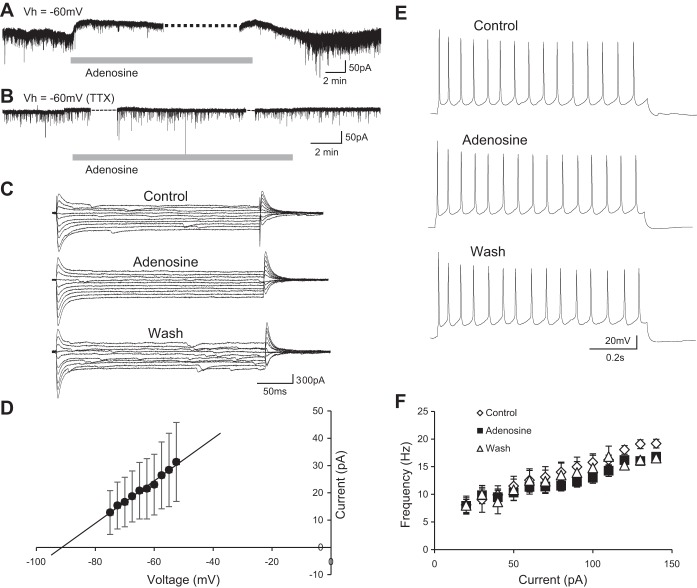Fig. 1.
Adenosine hyperpolarizes interneurons by opening leak K+ channels. A: voltage-clamp recording from a ventral horn interneuron during a 15-min bath application of 75 μM adenosine [holding potential (Vh) = −60 mV]. Adenosine induced an outward current in ventral horn interneurons held at −60 mV. B: voltage-clamp recording from a ventral horn interneuron during an application of 75 μM adenosine in the presence of TTX (0.5 μM; Vh = −60 mV). Adenosine no longer induced an outward current in the presence of TTX. C: example trace of 2.5-mV steps between −75 and −52.5 mV in control, adenosine, and wash conditions. Adenosine caused a reversible reduction in input resistance. D: averaged data (n = 22) showing the current-voltage (I-V) relationship of the adenosine-induced current revealed by subtracting control I-V relationships from those in the presence of adenosine. E: current-clamp recording showing repetitive action potential firing in a ventral horn interneuron in response to the injection of a square current pulse (110 pA) in control, adenosine, and wash. F: averaged data (n = 8) showing that adenosine had no effect on frequency-current relationships in control, adenosine, and wash (10-pA current steps from 20 to 140 pA).

